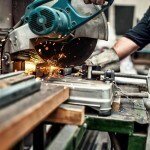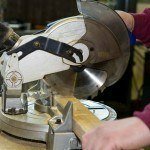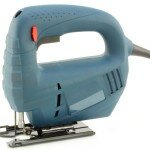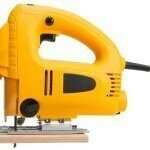Even though both chop saws plus miters saws occupy rotating, circular blades to cut via work materials, every saw has distinctive capabilities and pertains to various tasks. The actual features of chop saws plus miter saws can help the customer to choose the best device for a task.
Chop Saw:
The common term “chop saw” pertains to stationary power tools which cut materials with downwards chopping motion. Best chop saw contains 2 basic components: A blade mounted to hinged arm and a stationary base which supports material. Generally, a simple chop saw blade cuts just straight down.
A chop saw is a kind of saw that is usually designed for cutting natural share right down to the particular approximately correct dimension. A few of these saws are usually meant for wood, while some are designed for trimming metallic to dimension.
You usually clamp or elsewhere hold your work piece set up and the circular blade rotates right down to slice through the material. Frequently they will have blade protection so the harmful rotating blade is nearly uncovered for only a small amount time period as you possibly can while slicing through the material.
A few chop saws are usually installed on the counter, while some are portable and so are designed for use at the work site. It’s important to understand that best chop saw is usually meant for less exact cuts and that complete work is performed upon a far more precise saw.
Miter Saw:
The word “miter saw” usually pertains to chop saws with the capacity of creating curved cuts, such as bevel miter and cuts. Just similar to a chop saw, the blade of the miter saw fastens to a hinged arm plus slashes downward into a fixed foundation. Nevertheless, a new miter saw’s blade revolves and becomes permitting the operator of the tool to regulate the particular position of the cut.
Miter saws are probably the most popular, today hottest power tools inside the tool industry. Because of the portability, easy capacities, and general precision, a miter saw are available in every wood-shop nearly, garage area, or pickup. Miter saws are usually made to produce fast, accurate crosscuts right into a work piece, for framing or molding applications typically.
The particular work piece is pushed against a curved fence to guarantee the almost all precise cutting perspectives as you work. The fence usually sits at a 900 angle, but could be modified as necessary for a specific cut.
Some miter saws possess a miter catalog which allows users in order to exactly modify their own cut position in single degree increments, most likewise have capacities which enable quick and accurate slice stops at common slice angles like 150, 300, and 400. These exact miter cuts are created using the downward movement of the circular saw blade that spins along with the power of the motor of the tool.
Applications:
Although both forms of saws accept metal-cutting and wood blades, the word chop saw refers and then metal-cutting saws often, called cut-off saws, and miter saw typically identifies a wood-cutting saws. The particular rotating and switching capability of the miter saw produces mitered and beveled slashes that connect with end carpentry projects, molding and baseboard installation particularly.
Difference between the Two at a Glance:
Chop saw- steel trimming, harsh disc trimming blade. Miter saw is really a steel blade with an increase of user-friendly angle modification generally designed for solid wood plus non ferrous metals.
Miter saw is also called a chop saw. This awesome little bit of spinning risk is arguably probably the most useful equipment in the workshop. For DIYers and woodworkers, you essentially can’t perform without having it. For individuals who how to start just what a miter found does or will be, consider of it as a circular saw, mounted on to a foundation, where one can fully control its motion and angle of slice .
Every miter saw could have its limitations when it comes to depth of slice and angle range plus may or may not include other perks like a sliding functionality, supplementary light, or dirt collector. This stationary equipment contrasts with free-hand equipment and it is simple enough to observe exactly where their strengths lie.










